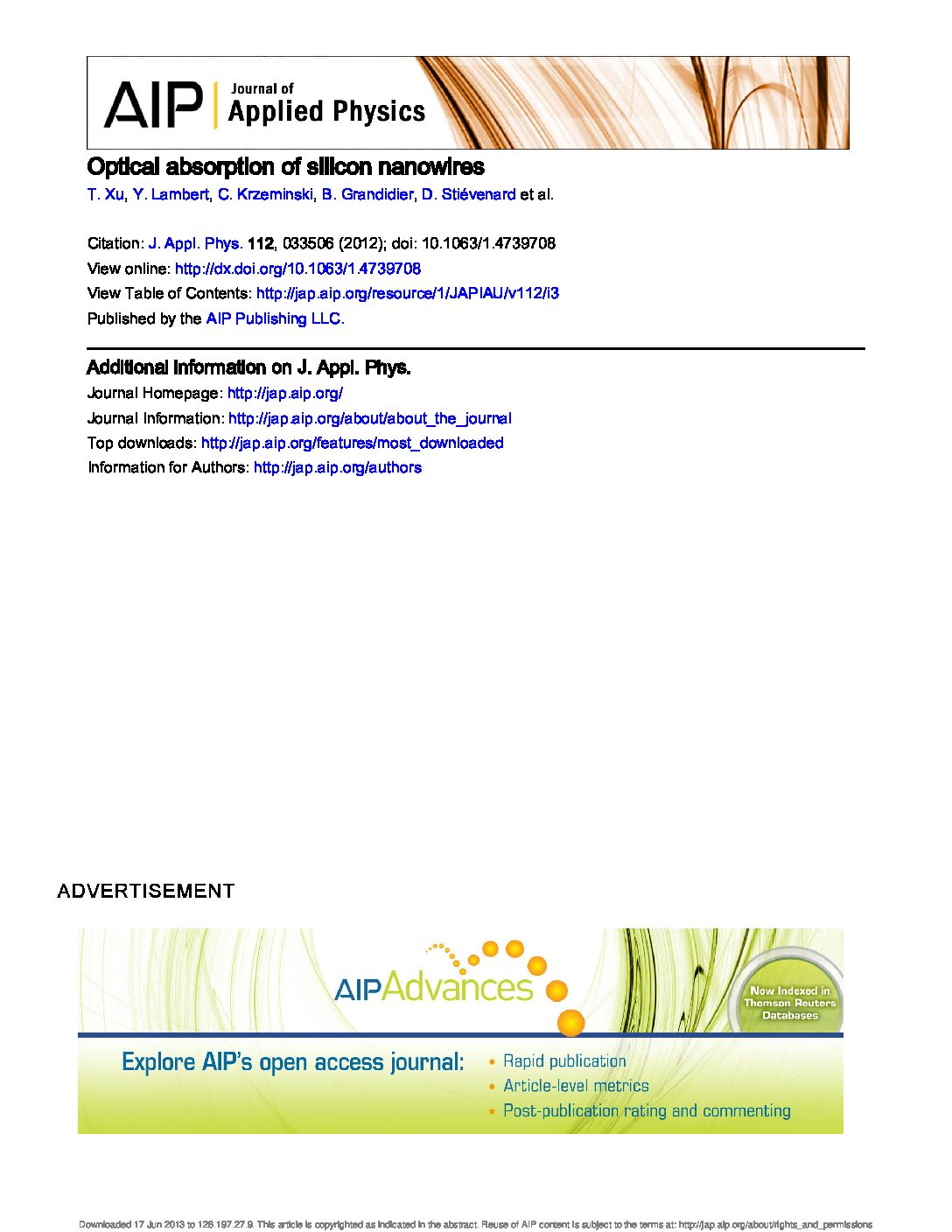- This topic has 10 replies, 2 voices, and was last updated 3 years, 11 months ago by
 sandhyarani sahoo.
sandhyarani sahoo.
-
AuthorPosts
-
-
July 30, 2020 at 4:49 pm #67753
 sandhyarani sahooParticipant
sandhyarani sahooParticipantHello
I am interested to find out Transmission spectra and reflection spectra of a single silicon nanowire of 112 nm diameter with incident light normal to the NW length.(i am attaching the schematic diagram)
For this, i followed one of the file provided in the FDTD forum which consisted Silicon Nanowire arrays designed with PBC(https://optiwave.com/forums/topic/silicon-nanowire-fdtd/). I have tried with APML layer but i am getting some results which is not reasonable.I have designed the nanowire in xz plane with length along x direction with incident light along z direction. I have placed two observation xy area for reflection and transmission spectra. I am attaching the Designer document.
kindly guide me in solving the issues.Attachments:
-
July 30, 2020 at 4:55 pm #67772
 Scott NewmanModerator
Scott NewmanModeratorYou will need to clarify what you mean by your results being not reasonable. A quick look at your design and I notice that your Gaussian has an incredibly small width, are you certain that is what you need? The OptiFDTD Gaussian source operates under the paraxial approximation which requires that the width be much larger than the source wavelength.
Scott
-
July 31, 2020 at 7:17 am #67778
 sandhyarani sahooParticipant
sandhyarani sahooParticipantThank you for your reply.
I am stating the details of the design. please correct me if i am wrong.As i am new to OPTIFDTD,i have a little bit knowledge in designing and getting the spectra. I have proceeded to measure the spectra with the *.FDA file provided in the FDTD method (https://optiwave.com/forums/topic/silicon-nanowire-fdtd/) and succeded in getting the accurate results for the silicon nanowire with incident light parallel to the nanowire length.
Then i proceeded for the nanowire with incident light normal to the nanowire length where i faced some issues. I came up with two ideas in designing the system.
1: I placed the silicon nanowire parallel to x-axis and the vertical input plane is placed in the positive direction. The detectors (observation areas for transmission spectrum and reflection spectrum ).( I have attached the deisgner file(*FDA) in the previous question)
2: I placed the silicon nanowire along the z-axis with vertical input plane in the positive direction with tilt angle 90 degree.Are they correct designs for my study?
Also, One more question i want to ask ” How do i know the time delay and FWHM for a particular source wavelength ?”
-
July 31, 2020 at 12:52 pm #67780
 Scott NewmanModerator
Scott NewmanModeratorIf you have the nanowire placed parallel to x and want the source to be normal then simply use the z-directed input plane with 0 tilt. There is no need to tilt the source. This is what you have in the original design file which you attached.
The time delay and FWHM can be seen in the Sine-Modulated Gaussian Pulse tab under the source properties, provided you are using a pulsed source.
-
July 31, 2020 at 1:14 pm #67781
 sandhyarani sahooParticipant
sandhyarani sahooParticipantThank you so much for your reply.
I have a query about the setting up of FWHM.
you have mentioned that width must be larger than the source wavelength.
As we have used 532 nm laser for our experiment, what should be the value of FWHM and time delay?one more question..As i am interested for calculation of transmittance spectra and reflection spectra, which parameters i should care for?
As you mentioned the design described in No. 1 is correct for my study, i am also curious to know about the design provided in no.2. Is it wrong?
Hope you will get my point.
-
July 31, 2020 at 1:32 pm #67782
 Scott NewmanModerator
Scott NewmanModeratorYou have misunderstood what I was referring to which is not helped by the fact that I was mistaken with what your design is doing. I thought you were using a Gaussian transverse profile which requires that the full width at 1/e^2 be larger than the source wavelength. Upon reviewing your design I do see that you are using a rectangular transverse profile, this does not have the same constraint, thought I do question why your field has only a 60nm half width.
Scott
-
July 31, 2020 at 2:51 pm #67783
 sandhyarani sahooParticipant
sandhyarani sahooParticipant1. So what is the recommended half-width for a rectangular transverse profile? I have just taken this 60nm half-width from an example.
Again, for my system what will be the better source (Gaussian transverse or rectangular transverse profile)?2. If I continue the simulation with the above-attached design (where the rectangular transverse source is normal to the length of the nanowire), I am getting the wrong transmission spectra. An image of the obtained transmission spectra is uploaded. Please check the image file and tell me how will I get the right transmission spectra (I have also uploaded the correct spectra from a reference)
-
August 3, 2020 at 9:45 am #67794
 Scott NewmanModerator
Scott NewmanModeratorWell I need the actual design you are using because the one you sent has not tilt but you have been referring to tilting the source.
-
August 7, 2020 at 11:24 am #67840
 sandhyarani sahooParticipant
sandhyarani sahooParticipantI am attaching both the structures what i used for my calculation.
In trial 90-112.FDT, i used the source with tilt angle 90.
In vertical.FDT, i placed nanowire parallel to x axis same as the previous attached design.Attachments:
-
August 7, 2020 at 12:49 pm #67844
 Scott NewmanModerator
Scott NewmanModeratorSandhyarani,
The trial-90-112.fdt is not going to be a functional design. The field will inject from that z-directed input plane and propagate at a 90 which is straight up you will not get propagation to the nanowire and certainly will not get reflection and transmission of perpendicular propagation. The vertical configuration is what you should be using.
You have also not clarified why you are using a field that has a half-width of only 60nm.
You have posted a reference picture with no design context, I do not know what normalization or post processing was done on that or the structure it is modelling. Are you able to share the whole reference?
Scott
-
August 7, 2020 at 2:20 pm #67845
 sandhyarani sahooParticipant
sandhyarani sahooParticipantThank you very much for providing the concept.
I am attaching a previous report but they used different software but not OPTIFDTD.
They have used the same configuration (i.e light is incident perpendicular to the NW axis) but with PBCs.
we are interested to find the transmittance and reflectance spectra of the same configuration but with PMLs.I have just taken this 60nm half-width from an example.
Attachments:
-
-
AuthorPosts
- You must be logged in to reply to this topic.




